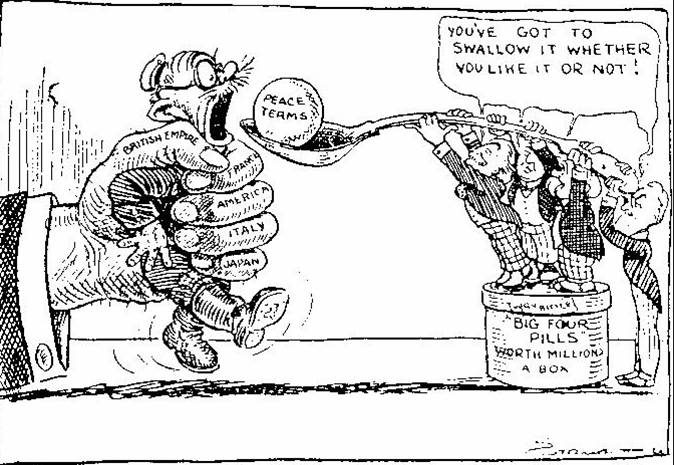
The Treaty of Versailles Solved One Problem, Caused Plenty More
Armistice stopped the conflict on Nov. 11, 1918, but officially World War I didn’t end until the Treaty of Versailles was signed June 28, 1919. The date was the five year anniversary of the assassination of Archduke Franz Ferdinand, the event credited with starting the war.
The treaty was specifically with Germany. Separate treaties ended the war with the other Central Powers.
The world breathed a collective sigh of relief the war was over. However, while the big powers were satisfied, Germany felt it had been wronged. Many smaller Allies also felt they had not been treated properly. All this set up grievances that would define the rest of the 20th century, some still unresolved today.
The Main Points
The treaty contained 15 parts and 440 articles. Negotiations began in January. France pushed for Germany to be punished more severely than the other Allies thought was necessary. They felt harsh punishment would lead to additional conflict, but France wanted to paralyze Germany and make it impossible for the nation to ever become a world power.
When the treaty was signed, the major points were:
- The League of Nations was created. Germany was forbidden to join until 1926.
- Parts of Germany were given to Belgium, France, Poland, Lithuania and Denmark.
- Germany was forced to give up any land gained during the Treaty of Brest-Litovsk, the treaty that withdrew Russia from the war.
- Germany was declared responsible for all Allied losses.
- Germany’s colonies were given to the Allies.
- All nations were to limit their militaries and weapon stockpiles. The requirement for Germany, however, was much more severe than those for other nations.
- Germany was forbidden to unify with Austria.
- Germany was forced to recognize the newly independent nations of Poland and Czechoslovakia.
- Germany was forced to pay more than $30 billion (in 1919 currency) in war reparations. The final payment was made in September 2010.
Unresolved Issues
Despite successfully ending the war, the treaty was flawed.
Its problems included:
- Negotiations were made with no participation from Germany. The nation was forced to sign under threat the Allies would invade. Many in Germany felt the government had betrayed its citizens by signing.
- The U.S. never ratified the treaty, despite President Woodrow Wilson working on the negotiations.
- Subsequent treaties modified Allied occupation of Germany and the timescale for reparation payments.
- Japan felt it wasn’t being treated on equal terms.
Where to Purchase the WWI Trilogy
This post is a companion piece to Melina Druga’s WWI Trilogy: Angel of Mercy, Those Left Behind and Adjustment Year. The trilogy focuses on Hettie and her family as they navigate the challenges and heartbreak World War I brings.
Angel of Mercy: A nurse reluctantly sacrifices her career for marriage. An impending war will change her, and her husband’s, life forever. Available in eBook, paperback and hardcover. Click here for a full list of retailers.
Those Left Behind: The brewing winds of war will soon rip the family apart. Available in eBook, paperback and hardcover. Click here for a full list of retailers.
Adjustment Year: A war nurse returns home. Society expects her to carry on as if the Great War never happened. But how can she? Available in eBook, paperback and hardcover. Click here for a full list of retailers.
